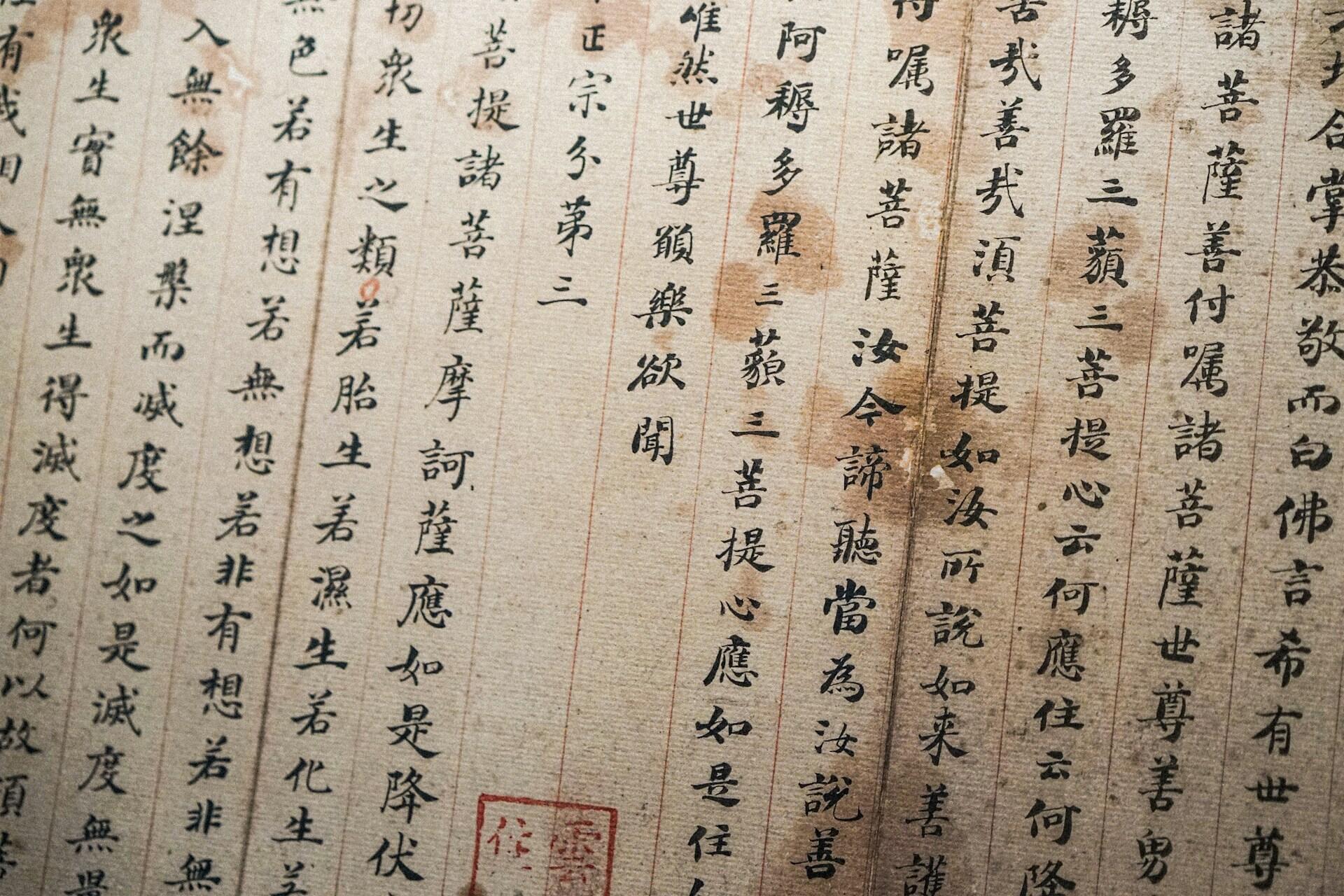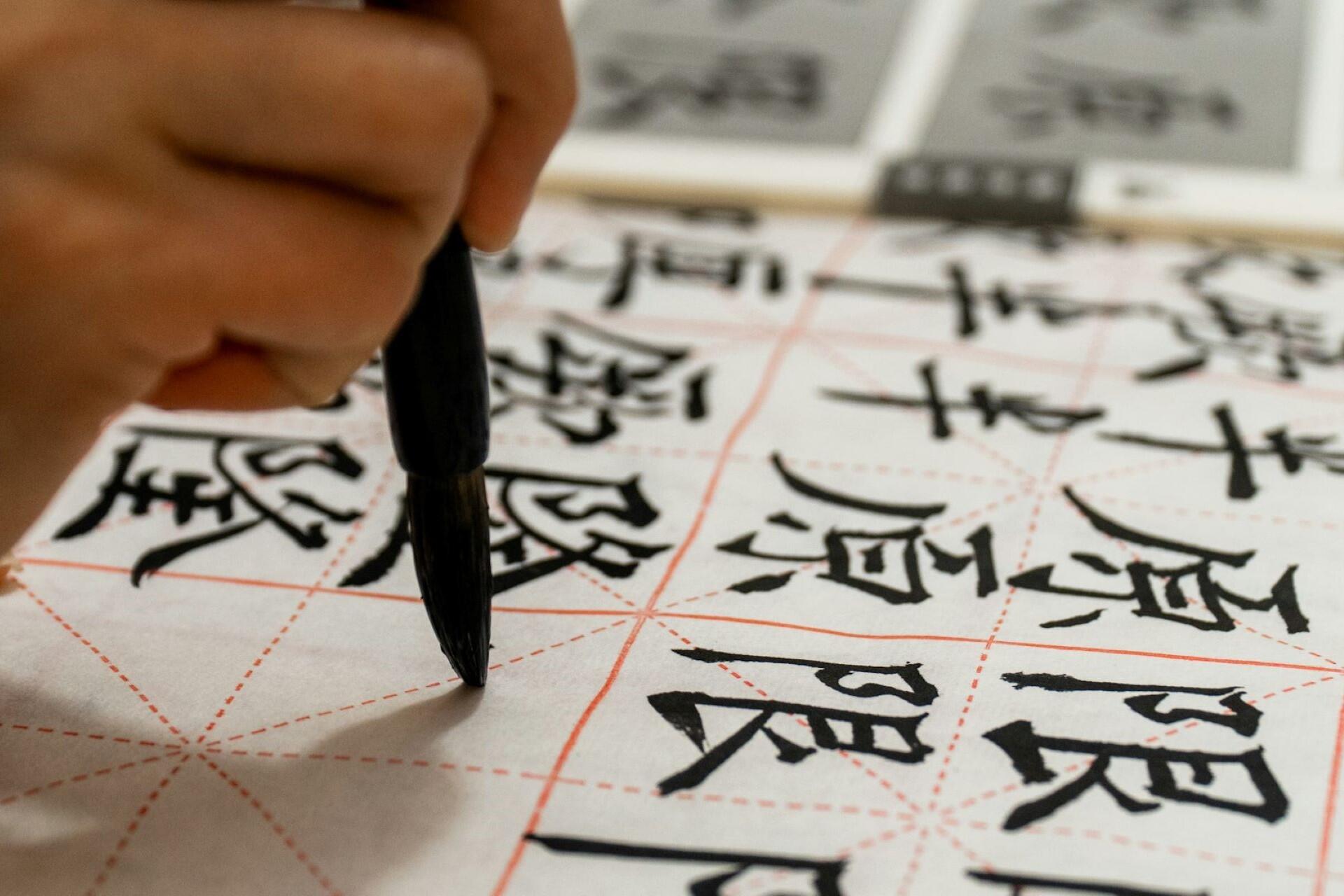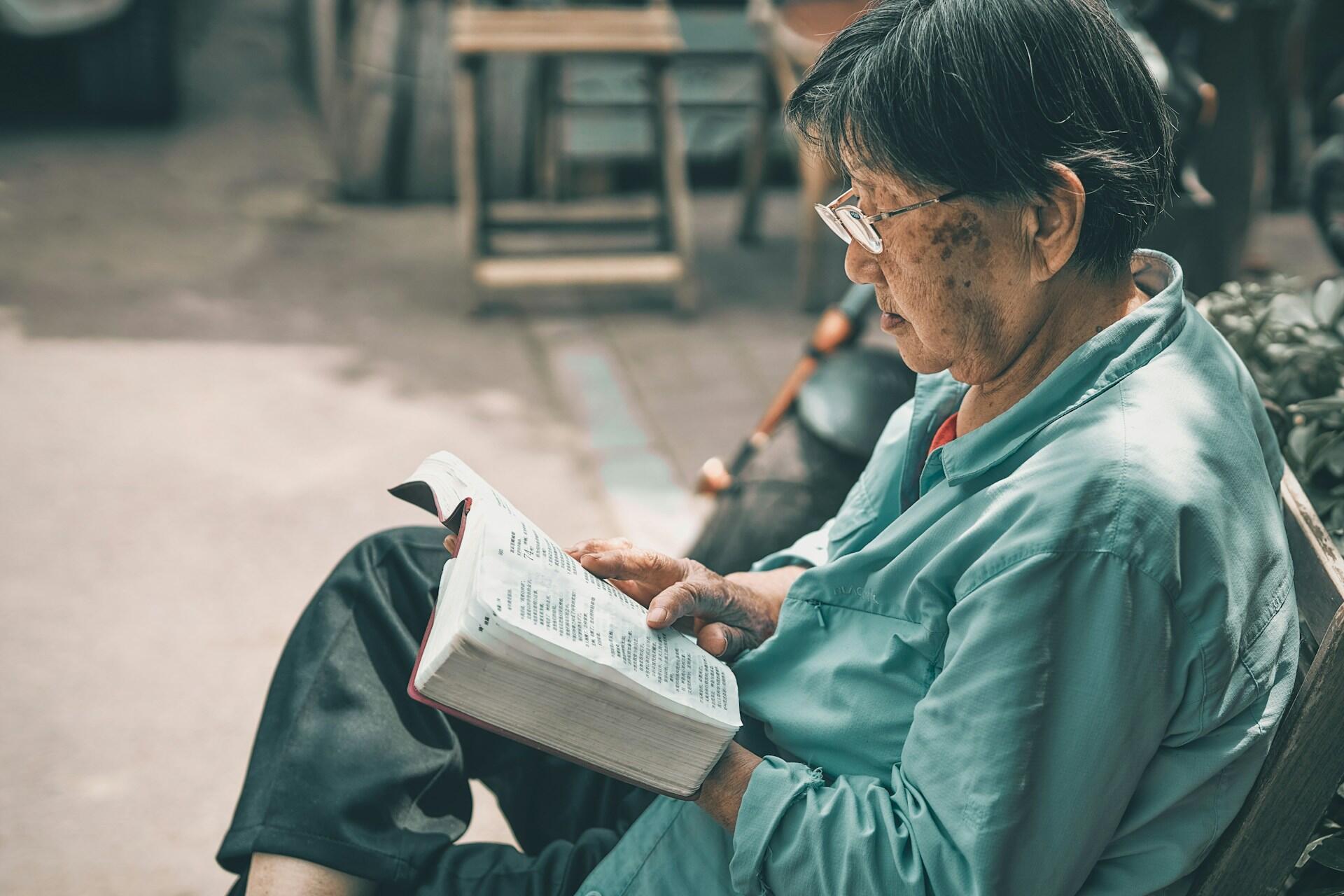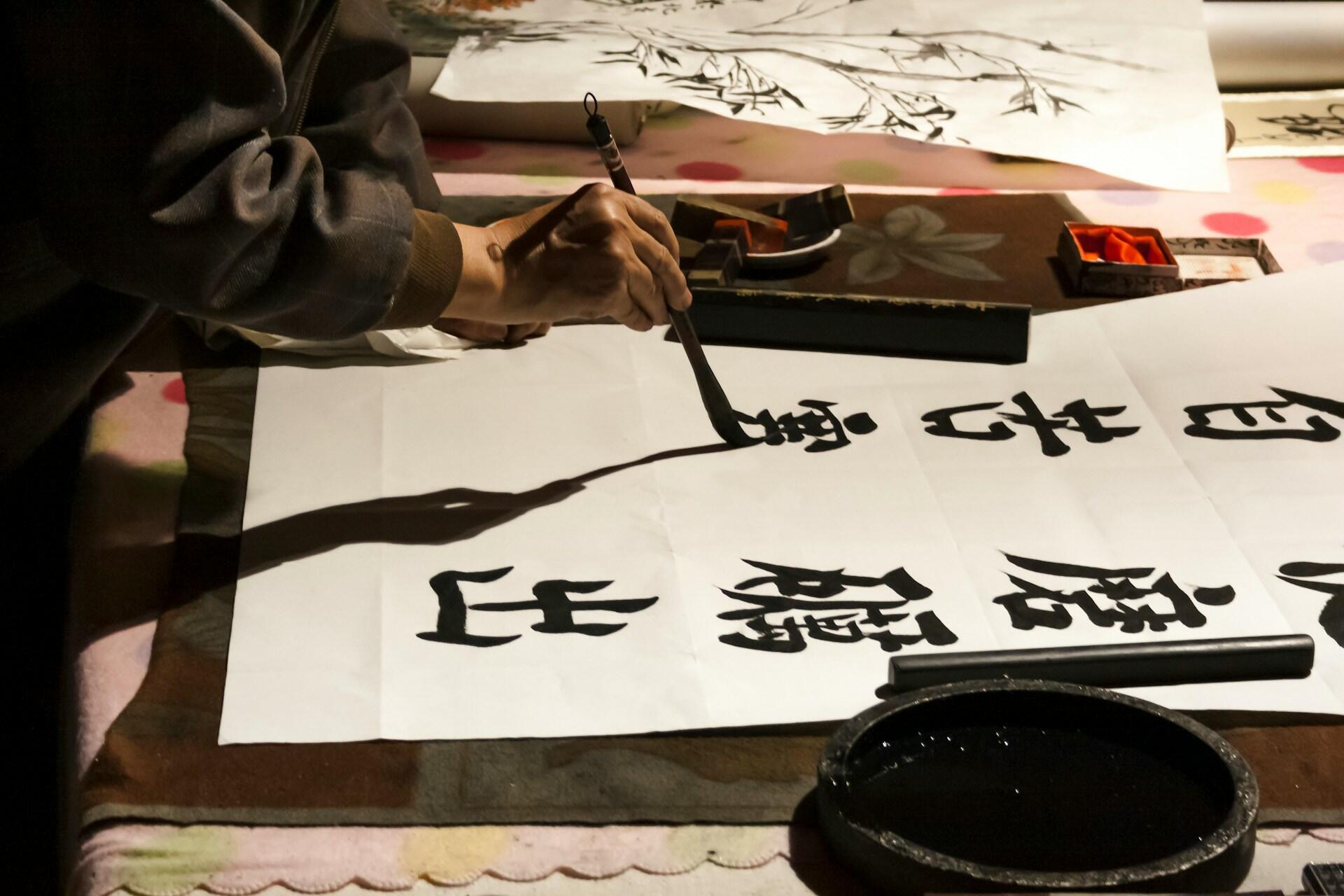To learn a language is to have one more window from which to look at the world.
Chinese Proverb
Nearly 2 billion people speak Mandarin Chinese. Dating back 4,000 years, the language has evolved while remaining deeply rooted in Chinese culture. The traditional writing system, known as Hanzi, is complex. However, since global interest in learning Mandarin is rising, you might be interested in learning the language and how to read and write in it. Let's explore the importance of the writing system, stroke order, and how Pinyin can help Westerners understand the language.

The Chinese Writing System
You might be wondering, what is the writing system of China? Often known as characters, 汉字 hanzi, or “Han characters,” the logograms used in the Chinese writing system are entirely different from those used in the Latin, Greek, or Cyrillic alphabets. Learning about the writing system isn’t optional for those who want to learn Chinese!

However, in the 1950s, to make their language more accessible, the Chinese government created a “phonetic transcription system” called Pinyin that helped revolutionize the way foreigners (particularly those in the West) learned Chinese.
Pinyin is a Romanization system that represents the pronunciation of Chinese characters. Developed in the 1950s, it's now widely used for teaching and typing Chinese. It's a bridge for beginners to learn Mandarin without first mastering complex characters.
In fact, Chinese is completely devoid of a phonetic writing system. As we mentioned before, the writing system is “logographic”, meaning symbols indicate individual words. Unlike alphabets, which use combinations of letters to create words, Chinese creates meaning from these symbols.
As one of the oldest writing systems, the Chinese writing system has had more than enough time to influence its neighbors, like Japan, for example.
While the writing system can strike fear into the hearts of even the most avid learners, you can take solace in the fact that there’s no such thing as upper and lower cases and that it was later simplified to make Chinese vocabulary easier for native and foreign learners.
Traditional and Simplified Compared
Traditional
愛
Simplified
爱
- Traditional (愛): The original form, used in Taiwan, Hong Kong, and Macau.
- Simplified (爱): The modernized form, used in Mainland China and Singapore to reduce the number of strokes.
The Kangxi Dictionary (made at Emperor Kangxi’s request) includes over 47,000 characters, and linguistic experts recommend that if students want to learn Mandarin Chinese enough to read the newspaper, they should familiarize themselves with at least 5,000 different characters.
everyday characters.
However, finding a word in a Chinese dictionary is a nightmare if you have no knowledge of reading and writing. With China's economic growth, it’s becoming increasingly important that we master these symbols.

Whether you take Chinese lessons at home or while in China, you’ll also need to learn how to pronounce words correctly.
Pronunciation is essential when learning Chinese, as you'll use it in everyday conversations. Good pronunciation ensures you'll be understood whether traveling, studying, or working in China.
The different melodies, rhythms, and tones of Chinese are famous for being rather complex. Each syllable has an initial, a final, and a pitch that will influence how you pronounce it. These syllables can be put together in small groups. However, these syllables are not words, and very few of them exist. While there are thousands of languages like English, French, and Spanish, Chinese has slightly over 400 potential syllables.
You might find this quite surprising when you find out that each traditional Chinese character corresponds to a single syllable. Most words in Chinese are monosyllabic or made of a combination of two or several syllables. This fact should make learning Chinese a little less scary.
Vowels in Chinese
Like in Hebrew or Arabic, signs are used above vowels in Chinese words. These signs tell the reader which tone to use when pronouncing the word or syllable. Tone is a typical aspect of Chinese that differentiates it from non-tonal languages such as English.
During your Chinese tutorials, you’ll learn four different tones (as well as the neutral tone) in Chinese, which are applied to every spoken syllable. The neutral tone is pronounced softly and briefly. The four other tones fluctuate between five different pitches. Chinese, just like music, pays particular attention to pitch.
First Tone
High Level
Steady and high-pitched.
Second Tone
Rising
Starts low and rises, like asking a question.
Third Tone
Falling-Rising
Drops down then goes back up.
Fourth Tone
Falling
Sharp and definitive, like a command.
Here are a few rules for the tones in Chinese:
When the third tone follows another third tone, the first is pronounced like the second.
When the third tone is placed before another tone, it dips but never goes back up.
- When the fourth tone follows another fourth tone, the first one is pronounced like the second tone.

How Can You Learn to Read Chinese?
The Chinese writing system has put off quite a few aspiring learners. With 5,000 official characters, 10,000 if we include special and obsolete characters, learning to read in Chinese can take a lot of time and effort.

Start taking Chinese classes on Superprof.
You need to be aware that a Chinese character is made of several points. Additionally, you need to know the meaning of each character’s shape. You then need to be able to work out how to pronounce the character and apply the correct tone depending on where you find the character. Finally, you need to know how to write the character without any help and respect the order of the strokes.
Here's a quick guide on stroke order.
When it comes to learning the characters, students should familiarize themselves with them slowly. Avoid using approaches that are too “academic,” as this can demoralize students.
Generally speaking, the most common method for learning Chinese characters is to treat each character as a separate entity.
To learn Chinese characters, you have to learn how to write them (in the correct order) and repeat this until you never forget them. This traditional kinesthetic learning method builds upon how Chinese characters are taught in terms of difficulty and can help the brain associate the movement with the characters.
Most teachers agree that students should completely learn certain characters before they even begin to think about learning some of the others. The only way for the student to progress is to learn to both read and write Chinese characters. The challenge is making sure that they can recall how to both read and write the characters at a later date.
New teaching methods that seem to be completely in contrast to this method are being developed. They’re based on the fact that learning Chinese is seen as a way to communicate in writing and speaking. They’re used in classes in China and elsewhere.
The 26 Letters of the Latin Alphabet in Chinese
| Letter | Chinese Character | Pinyin |
|---|---|---|
| A | 阿 | ā |
| B | 贝 | bèi |
| C | 色 | sè |
| D | 德 | dé |
| E | 饿 | è |
| F | 艾弗 | ài fú |
| G | 日 | rì |
| H | 阿什 | ā shí |
| I | 伊 | yī |
| J | 鸡 | jī |
| K | 卡 | kǎ |
| L | 艾勒 | ài lè |
| M | 艾马 | ài mǎ |
| N | 艾娜 | ài nà |
| O | 哦 | ó |
| P | 佩 | pèi |
| Q | 苦 | kǔ |
| R | 艾和 | ài hé |
| S | 艾丝 | ài sī |
| T | 特 | tè |
| U | 玉 | yù |
| V | 维 | wéi |
| W | 独布勒维 | dú bù lè wéi |
| X | 伊克斯 | yī kè sī |
| Y | 伊格黑克 | yī gé hēi kè |
| Z | 贼德 | zéi dé |
How Do You Use a Keyboard in Chinese?
Since Chinese uses a logographic writing system, typing Chinese is far more complex than typing non-logographic writing systems like the Latin or Cyrillic alphabets.

A typical Chinese printer needed to use at least 6,000 different Chinese characters. Chinese and Japanese typewriters started popping up at the beginning of the 20th century and were invented by Hou-Kun Chow. The original design used around 4,000 Chinese characters.
Chinese Calligraphy: Art and Writing
Traditional Chinese writing uses brushes and ink, which are often known as the Four Treasures of the Study (文房四宝; Wénfáng Sìbǎo). The shape, size, tension, and type of hair used in the brush, the color and density of the ink, and the absorption rate and texture of the paper are the main physical properties that influence Chinese calligraphy.
Brush (笔) – For creating characters with fluid strokes.
Ink (墨) – Traditionally made from pine soot and water.
Paper (纸) – Specially designed for calligraphy to absorb ink smoothly.
Inkstone (砚) – Used to grind the inkstick with water.
When it comes to Chinese calligraphy, five conditions must be met for it to have any artistic merit.
The characters must be:
Correctly written
Readable
Concise
Adapted to their context
Aesthetically pleasing
Learn to Read and Write in Chinese with a Private Tutor
Mastering Chinese characters is understandably difficult, but with the proper guidance, anyone can do it. Thanks to private tutors, you can enjoy personalized lessons focusing on your strengths while addressing your weaknesses with targeted practice.
Connect with experienced Chinese tutors on Superprof and find someone to tailor their sessions to your preferred learning style. Whether you're a beginner or looking to take your Mandarin to the next level, you can start unlocking the beauty of Chinese writing with Superprof today.
Since many tutors offer the first session for free, you can try a few potential tutors before choosing the perfect match for you and your learning objectives!
















